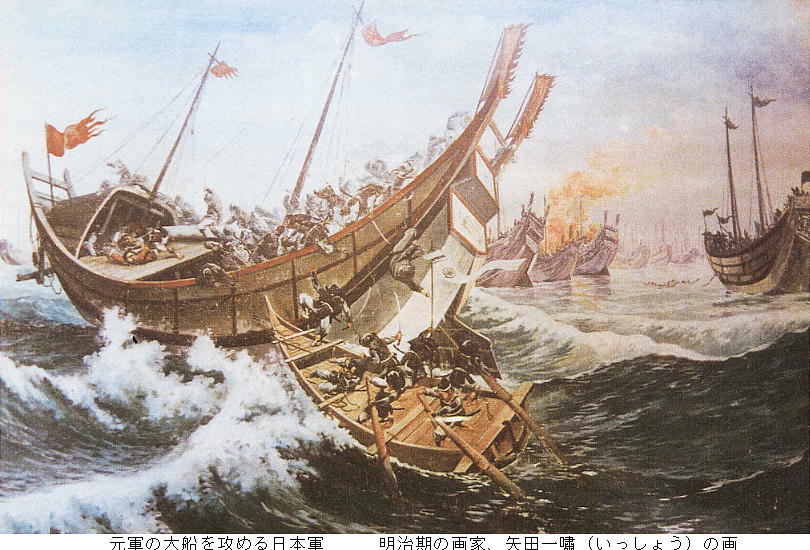Mongol Invasion against Japan vs. Zen Buddhism
In 1274 and 1281, Kublai Khan (1215-1294), the Mongolian emperor of the Yuan dynasty of China, tried to invade Japan, sending more than 30,000 troops by 900 ships in 1274 and more than 150,000 troops by 4,400 ships in 1281.
These incidents are called Mongol invasion attempts against Japan.
Eventually, Yuan troops, consisting of Mongolians, Chinese and Koreans, were defeated twice. The strongest nation in the world at the time could not occupy any part of Japan. Since then no Chinese dynasties tried to invade Japan.
But what made Hojyo Tokimune so bravely encounter Mongolians? Especially, in the second invasion, Emperor Kublai mobilized overwhelmingly larger troops than in the first invasion. But, Tokimune was so determined to fight them.
It was one Chinese Buddhist priest who came to Japan to teach Zen Buddhism that supported Tokimune. This priest Mugaku Sogen (1226–1286) himself had encountered Mogolian troops when he was still in China. It was when Mongolians invaded southern China and Mugaku Sogen took shelter in a temple. But, Mongolian soldiers came in the temple and tried to kill him. However, as Mugaku Sogen chanted some Buddhist creed, soldiers were impressed and left the temple without killing him.
Afterward, Mugaku Sogen was invited to Japan by Hojyo Tokimune who expelled the first Mongolian invasion of 1274. Mugaku Sogen came to Japan in 1279 to settle in Kamakura, the capital of the samurai regime, and teach Buddhism to many samurais.
Before the Yuan dynasty started the second invasion of Japan, Mugaku Sogen predicted the coming war to Tokimune, saying to go ahead without looking back. Encouraged by this word, Tokimune bravely mobilized samurais, made them prepare for the world strongest Mongolian troops, and took command of them.
Though it was true that a strong typhoon attacked Mongolian ships off the coast of Kyusyu and destroyed many of them, Japanese samurais successfully defended an area around Hakata Bay, the main battle field, of northern Kyusyu courageously for two months against hundreds of thousands of Yuan troops. And, Hojyo Tokimune ascribed his victory to the spiritual support from Mugaku Sogen rather than to the typhoon.
Put simply, 150,000 troops Emperor Kublai Khan dispatched to Japan were defeated by one old Chinese Buddhist monk who helped Japanese samurais.
After the war, Hojyo Tokimune built a temple named Enkakuji as part of memorial services for fallen samurais. And, Mugaku Sogen became the chief priest of Enkakuji Temple to live in the temple till his death.
Accordingly, Zen Buddhism became popular among Japanese samurais as well as in the general public.
But if Japan had been conquered in 1281 by the Yuan dynasty established by Mongolians in China, the history of Japan should have been quite different. For this reason, Buddhism and especially Zen Buddhism became an essential part of Japan.

.http://inoues.net/ruins/genkoh.html
The Mogolian invasion route from the Korean Peninsula to Kyusyu. They also came over the East China Sea. Red dots show Hakata, Kyoto, and Kamakura from the left.
http://blogs.yahoo.co.jp/mqhdq538/62996264.html
**** **** ****
Mat 6:8 Be not ye therefore like unto them: for your Father knoweth what things ye have need of, before ye ask him.
Mat 6:9 After this manner therefore pray ye: Our Father which art in heaven, Hallowed be thy name.
